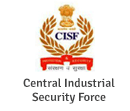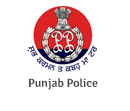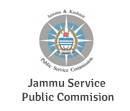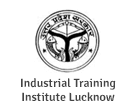In the realm of education and assessment, the grading process stands as a cornerstone for evaluating the knowledge and capabilities of students. The principles of efficiency, accuracy, and fairness lie at the heart of this process, shaping the quality of education and the outcomes it produces. However, for decades, educational institutions grappled with the challenges posed by traditional methods of manually grading exams and assessments. These methods, while once the norm, have proven to be not only time-consuming but also riddled with the potential for errors and biases that compromise the very ideals of education.
Traditional grading methods, involving the painstaking review of paper-based exams and assessments, are inherently labour-intensive. Educators and examiners tasked with the responsibility of manually evaluating students’ responses find themselves investing significant amounts of time and effort. Grading large volumes of answer sheets without using an optical mark reader can be arduous, taking away valuable hours that educators could otherwise allocate to teaching, mentoring, or curriculum development.
Beyond the issue of time, manual grading also exposes the grading process to the inherent limitations of human cognition and judgment. The interpretation of handwritten responses, often in varying styles and penmanship, is subject to the idiosyncrasies and subjectivity of individual graders. This subjectivity can inadvertently lead to grading disparities, where students’ scores may fluctuate based on the examiner’s interpretation of their work. Such discrepancies not only affect the accuracy of grading but also have implications for students’ educational outcomes.
Understanding OMR Technology
Optical Mark Reader involves the scanning and analysis of paper-based forms or answer sheets containing marked choices or responses. These responses are typically in the form of bubbles filled in with a pencil or pen. OMR technology uses optical sensors and software to detect and interpret these marks, converting them into digital data that can be processed and analysed efficiently.
Speed and Efficiency
One of the most significant advantages of optical mark reader in the grading process is its speed and efficiency. When educators and examiners manually grade paper-based exams, it can take a considerable amount of time, particularly for large classes or high-stakes examinations. OMR technology, on the other hand, can process hundreds or even thousands of answer sheets in a matter of minutes. This rapid turnaround time allows educational institutions to provide timely feedback to students, a crucial aspect of the learning process.
Moreover, the efficiency of OMR technology extends beyond just grading speed. It also reduces the administrative burden on educators. Instead of tediously going through each answer sheet, they can focus on reviewing the results and identifying areas where students may need additional support or instruction.
Accuracy and Consistency
Accuracy is another key benefit of OMR technology. Human error is an inherent risk in manual grading, and even the most conscientious examiners can make mistakes when interpreting handwritten responses. OMR technology, however, is highly precise and consistent. It reads and interprets the marked responses with a high degree of accuracy, virtually eliminating grading errors.
Consistency is equally critical in the grading process. When multiple educators are involved in grading the same set of exams, there is a possibility of variation in their assessments. OMR technology ensures that all answer sheets are graded against the same criteria and standards, guaranteeing a uniform and fair evaluation for all students.
Scalability and Flexibility
OMR technology offers scalability, making it suitable for institutions of all sizes. Whether grading a small class or a large-scale examination, the technology can adapt to the workload. This flexibility is particularly advantageous for educational institutions that need to accommodate varying student populations and assessment requirements.
Furthermore, the optical mark reader allows for the creation of customised answer sheets and questionnaires, catering to diverse assessment formats. Whether it’s multiple-choice questions, true-false statements, or even open-ended questions with OMR-compatible grids for responses, the technology can be tailored to the specific needs of an assessment.
Data Analysis and Reporting
Optical mark reader not only grade assessments but also provides comprehensive data analysis and reporting capabilities. Educators can gain valuable insights into student performance by accessing detailed statistics and reports. These reports can highlight areas of strength and weakness, allowing educators to adapt their teaching strategies accordingly.
For educational institutions, data analysis through OMR technology enables them to evaluate the effectiveness of their curricula and assessments. It empowers decision-makers with valuable information to make data-driven improvements in educational programmes and assessment methodologies.
Reduction of Bias
One of the less-discussed but significant advantages of OMR technology is its role in reducing grading bias. Human graders can inadvertently introduce bias based on factors such as handwriting, gender, or even the order in which answer sheets are reviewed. OMR technology, however, is impartial and treats all responses equally. It doesn’t consider irrelevant factors, ensuring that students are assessed solely based on the quality of their answers.
By eliminating grading bias, OMR technology contributes to a fair and equitable assessment process, which is crucial for maintaining the integrity of educational institutions and fostering a positive learning environment.
Security and Data Protection
Security is a top priority in education, especially when handling sensitive student data. OMR technology incorporates features like data encryption and secure storage, safeguarding student information from unauthorized access or breaches. This level of data protection aligns with the stringent privacy regulations that educational institutions must adhere to.
Additionally, OMR technology ensures the integrity of the grading process. It provides an audit trail, allowing educators and administrators to track the entire grading process, from scanning answer sheets to generating final results. This transparency enhances trust in the assessment process for educators and students.
Conclusion
OMR technology has transformed the grading process in education, offering speed, accuracy, consistency, scalability, and flexibility. It empowers educators with valuable data analysis tools, reduces grading bias, and ensures the security and integrity of the assessment process.
As educational institutions continue to seek ways to improve efficiency and fairness in their grading practices, OMR technology stands as a reliable and effective solution. Its ability to process large volumes of assessments quickly and accurately while reducing the risk of grading bias makes it an indispensable tool for educators and institutions committed to providing high-quality education and assessment.
OMR technology has ushered in a new era of grading efficiency, accuracy, and fairness in the education sector. Its impact on the assessment process has been transformative, benefiting both educators and students by ensuring timely feedback, reducing errors, and promoting a level playing field in education.






